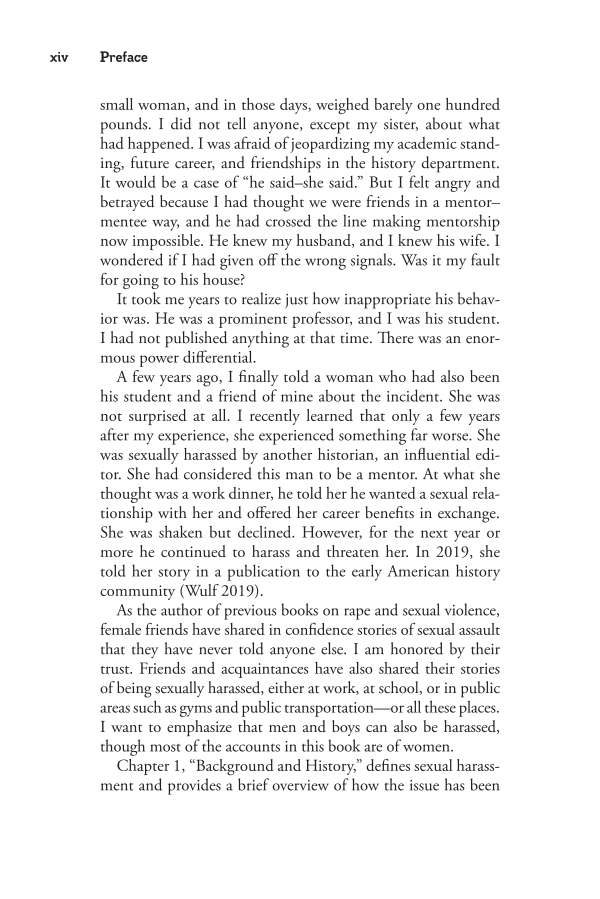xiv Preface small woman, and in those days, weighed barely one hundred pounds. I did not tell anyone, except my sister, about what had happened. I was afraid of jeopardizing my academic stand- ing, future career, and friendships in the history department. It would be a case of “he said–she said.” But I felt angry and betrayed because I had thought we were friends in a mentor– mentee way, and he had crossed the line making mentorship now impossible. He knew my husband, and I knew his wife. I wondered if I had given off the wrong signals. Was it my fault for going to his house? It took me years to realize just how inappropriate his behav- ior was. He was a prominent professor, and I was his student. I had not published anything at that time. There was an enor- mous power differential. A few years ago, I finally told a woman who had also been his student and a friend of mine about the incident. She was not surprised at all. I recently learned that only a few years after my experience, she experienced something far worse. She was sexually harassed by another historian, an influential edi- tor. She had considered this man to be a mentor. At what she thought was a work dinner, he told her he wanted a sexual rela- tionship with her and offered her career benefits in exchange. She was shaken but declined. However, for the next year or more he continued to harass and threaten her. In 2019, she told her story in a publication to the early American history community (Wulf 2019). As the author of previous books on rape and sexual violence, female friends have shared in confidence stories of sexual assault that they have never told anyone else. I am honored by their trust. Friends and acquaintances have also shared their stories of being sexually harassed, either at work, at school, or in public areas such as gyms and public transportation—or all these places. I want to emphasize that men and boys can also be harassed, though most of the accounts in this book are of women. Chapter 1, “Background and History,” defines sexual harass- ment and provides a brief overview of how the issue has been
Document Details My Account Print multiple pages
Print
You have printed 0 times in the last 24 hours.
Your print count will reset on at .
You may print 0 more time(s) before then.
You may print a maximum of 0 pages at a time.




























































































































































































































































































































































































